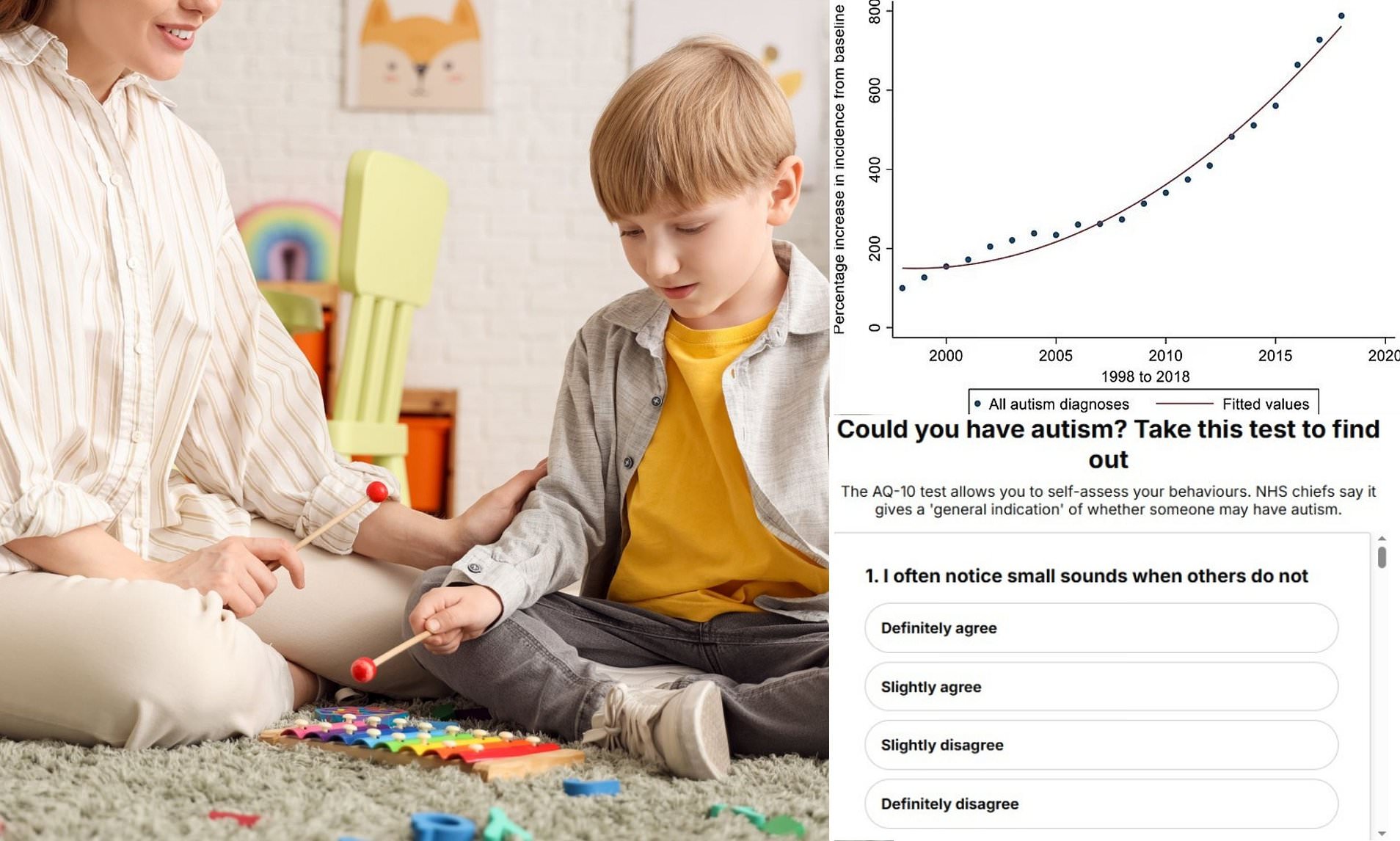Understanding Autism: A Breakthrough in Classification
Scientists have made a significant breakthrough by identifying four distinct types of autism, marking what they describe as a ‘paradigm shift’ in the approach to treating the disorder. This discovery comes from a study conducted by US experts who analyzed data from 5,000 children, revealing that autism can be categorized into four subtypes, each with unique genetic links and characteristics.
The most common type identified was the ‘Social and Behavioural Challenges’ group, which accounted for 37% of cases. Individuals in this category often exhibit core autistic traits such as difficulties in social interactions and repetitive behaviors. While they do not face developmental challenges, they are more likely to develop other mental health issues like attention deficit hyperactivity disorder (ADHD), anxiety, depression, or obsessive-compulsive disorder (OCD). Researchers noted that the genes associated with this type become active later during childhood development, potentially explaining the delayed diagnosis.
The second most common type was the ‘Moderate Challenges’ group, making up 34% of cases. These individuals shared similarities with the first group but were not at an increased risk of developing mental health conditions. The third type, called ‘Mixed ASD with Developmental Delay,’ affected about one in five children. These children typically reach developmental milestones later than others without autism, yet they don’t have a higher risk of mental health conditions. They also show a mix of autistic traits and are more likely to have rare genetic traits linked to autism.
The final type, ‘Broadly Affected,’ represented only 10% of cases but involved the most severe symptoms. Children in this group experienced profound developmental delays and had a greater risk of other mental health conditions. Notably, this group had the highest proportion of harmful ‘de novo’ mutations—mutations that occur independently during fetal development rather than being inherited from parents.
Professor Olga Troyanskaya, a genomic data analysis expert and senior author of the study, emphasized the potential impact of this discovery on faster diagnosis and personalized treatments for autistic individuals. She stated that understanding the genetics of autism is crucial for uncovering the biological mechanisms behind the condition, enabling earlier and more accurate diagnosis, and guiding tailored care.
Psychologist Jennifer Foss-Feig added that knowing a child’s autism subtype could help parents recognize key signs of mental health conditions or developmental issues early on. This knowledge could guide families in planning for their child’s future, including choosing appropriate treatments and anticipating potential challenges.
What Is Autism?
Autism is a neurodevelopmental condition characterized by differences in how individuals communicate, interact socially, and process information. It is not an illness or disease but a natural variation in brain function. Being autistic means your brain works differently from others, and it is something you’re born with or becomes apparent in early childhood.
Autistic people may experience challenges in communication and social interaction, find certain sensory stimuli overwhelming, struggle to understand others’ perspectives, and feel anxious in unfamiliar situations. They may also engage in repetitive behaviors or have a strong focus on specific interests.
What Causes Autism?
The exact cause of autism remains unknown, though research suggests a combination of genetic and environmental factors. It can run in families, indicating a possible hereditary component. However, it is not caused by bad parenting, vaccines, diet, or infectious diseases.
The Broader Implications of the Study
The findings, published in Nature Genetics, were based on analyzing data from 5,000 children participating in a long-term autism study. Researchers examined 230 traits associated with autism and assigned each child to one of the four subtypes before cross-referencing the data with genetic information.
While the study highlights these four main categories, the researchers stress that further research may reveal additional subtypes within each group. Their work comes amid growing concerns about the increasing prevalence of autism in England, where cases have risen eightfold over recent decades. Experts suggest this increase is largely due to heightened awareness, although some question whether over-diagnosis might also play a role.
In England, the number of people awaiting autism assessments has reached over 200,000, with many waiting for years. Autism charities have criticized the situation, calling it unacceptable that large numbers of individuals remain undiagnosed for extended periods.
According to the World Health Organization, approximately one in 100 children globally has autism. In adults, signs may include difficulty understanding others’ emotions, anxiety in social settings, a need for routine, or appearing blunt unintentionally. Autistic children may avoid eye contact or not respond when their name is called.
Autism exists on a spectrum, meaning that while some individuals can lead independent lives, others may require ongoing support. It is not a disease, and individuals live with it from birth, though it may not be recognized until later in life.






